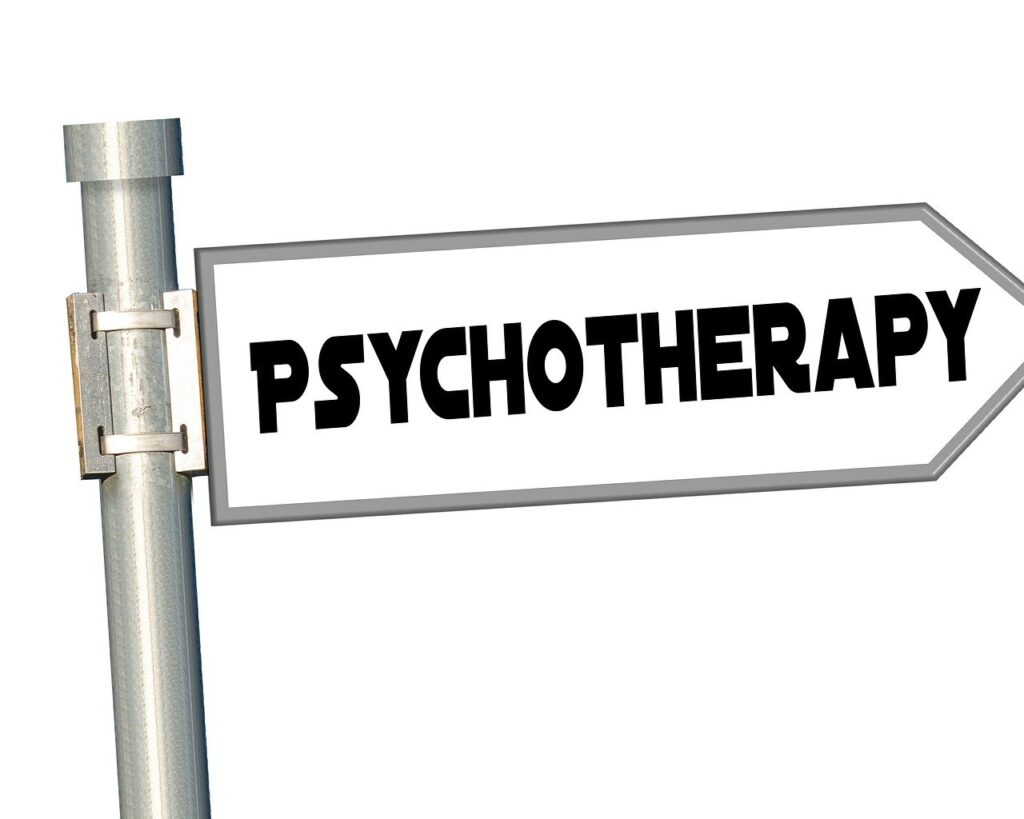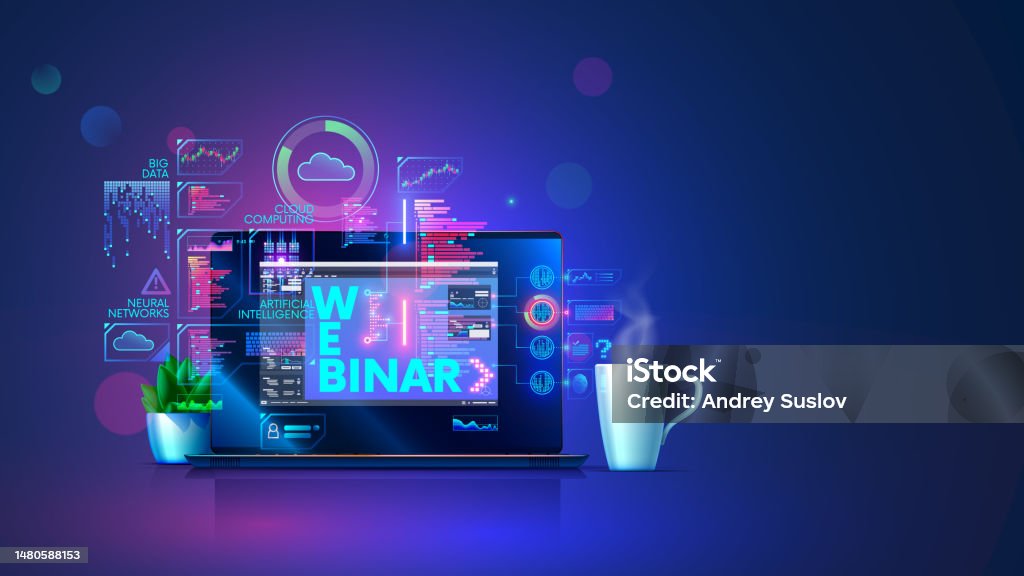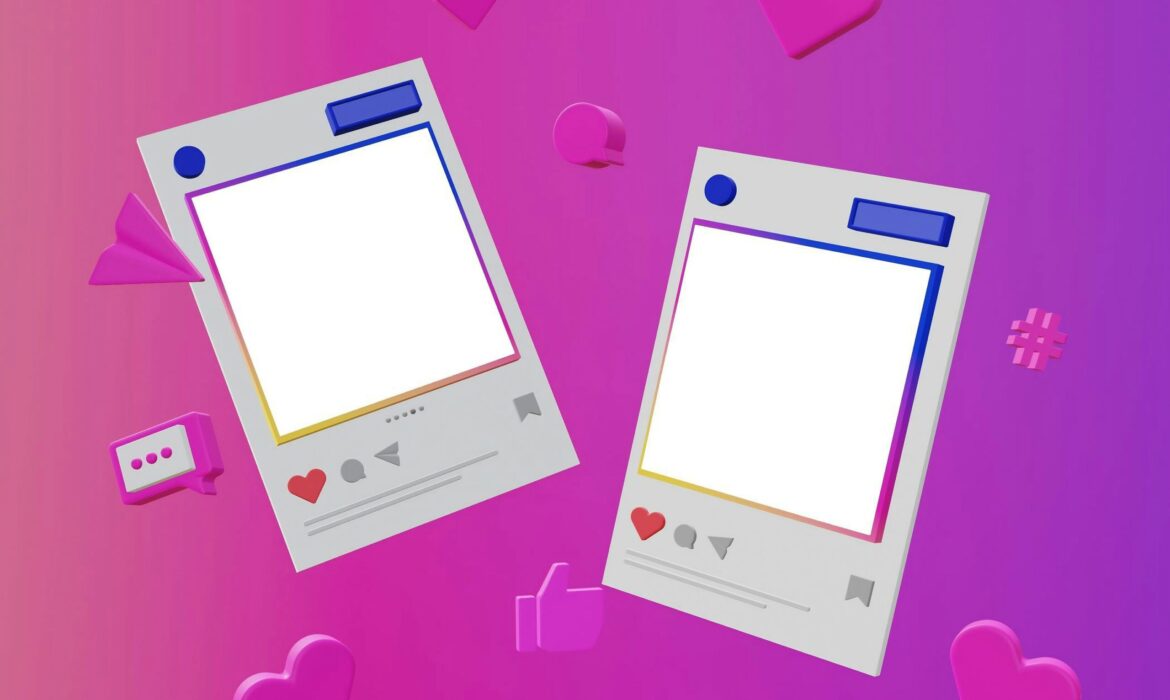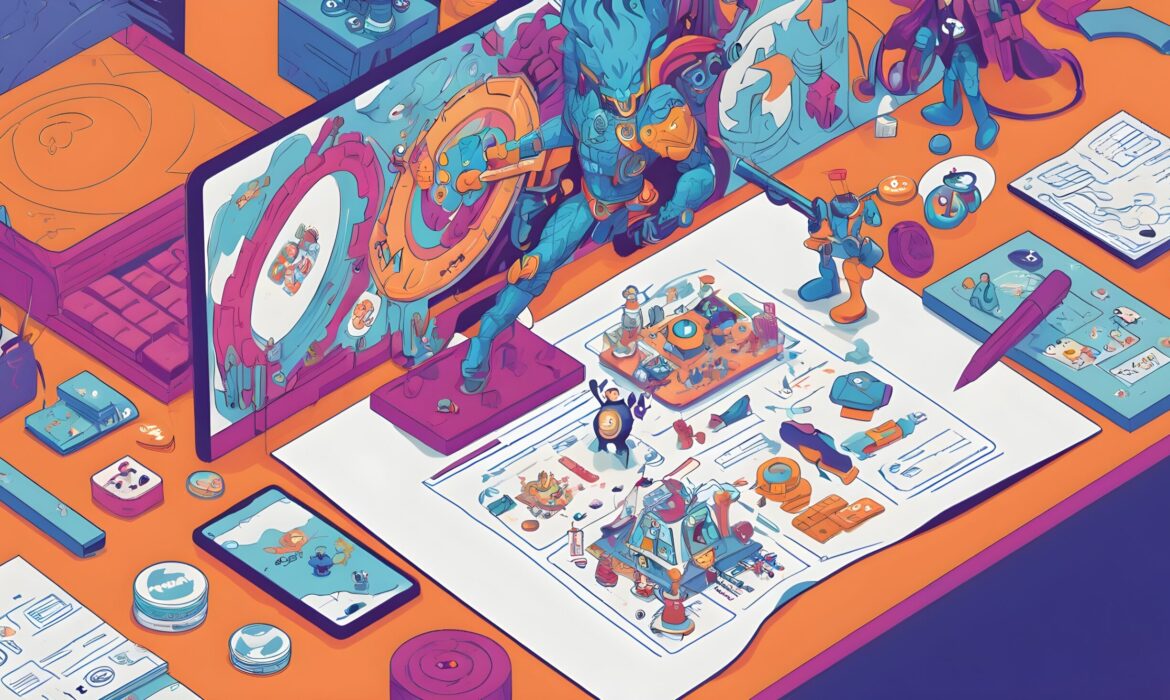081-4797-7173
What You Need to Know About Personality Disorder and Its Treatment Options

Personality disorders are a class of mental health conditions characterized by strict and harmful patterns of thought, feeling, and behavior.
These patterns differ dramatically from the individual’s cultural norms, causing pain and damage in a variety of aspects of life such as relationships, jobs, and social interactions.
This article aims to provide information about various personality disorders, their characteristics, and treatment options.
Types of Personality Disorders
There are various forms of personality disorders, each with its unique traits and therapeutic approaches.
The Diagnostic and Statistical Manual of Mental Disorders, Fifth Edition (DSM-5) divides personality disorders into three categories: Cluster A (odd or eccentric), Cluster B (dramatic, emotional, or unpredictable), and Cluster C (anxious or terrified) the three categories. Each cluster has individual conditions with unique features and treatment methods.
1. Cluster A includes paranoid, schizoid, and schizotypal personality disorders.
- Paranoid personality disorder: This manifests as widespread distrust and suspicion of others. Individuals with this disorder are frequently prone to transferring blame and seeing the actions of others as intentional. They may be cautious, angry, and vulnerable to accusations of disloyalty or deception in interpersonal relationships, causing strain and social isolation. Their suspicion and obsession with potential threats can jeopardize their capacity to trust and communicate with others. This can lead to a chronic habit of interpersonal conflict and trouble building close relationships.
- Schizoid personality disorder: This is characterized by a disinterest in social relationships, emotional coldness, and isolation. Such people prefer solitary hobbies and have little interest in developing personal connections or engaging in social interactions. This might lead to feelings of emotional detachment and loneliness. Their emotional expression is often restricted, and they may appear aloof or unconcerned about praise or criticism. While they may have an extensive mental fantasy world, they frequently struggle to convey their thoughts and feelings to others. This might lead to a seeming lack of warmth and empathy. As a result, people may live solitary lives, seeking fulfillment in solitary hobbies or intellectual interests rather than interpersonal relationships.
- Schizotypal personality disorder: People with this disorder exhibit unusual behavior, strange ideas, and perceptual errors, which frequently lead to social isolation. Their speech may be confusing, diverting, or characterized by strange wording or unique patterns of speech. They may engage in odd behaviors or dress in unusual ways, which frequently represent their unique thoughts or perceptions. Despite their yearning for social connection, their oddness and perceived social incompetence can cause severe social anxiety and make it difficult to build strong connections. They may feel misunderstood or distanced from others, resulting in social isolation and rejection.
2. Cluster B includes antisocial, borderline, histrionic, and narcissistic personality disorders.
- Antisocial personality disorder: This is defined by a pattern of disregard and violation of the rights of others. Individuals with this condition may engage in illegal conduct, manipulation, and exploitation for selfish gain, as well as exhibit a lack of empathy. They frequently engage in deception, manipulation, and hostility. Their behavior is reckless, and they show little regret for destructive deeds. ASPD can result in legal issues, strained relationships, and trouble sustaining jobs.
- Borderline personality disorder: This is defined by instability in relationships, self-image, and emotions, which frequently leads to impulsive conduct and self-harm. Individuals with BPD engage in impulsive behaviors such as reckless driving, substance abuse, binge eating, or self-harm, which are commonly used to cope with overwhelming emotions. They suffer fast alterations in self-image, identity, and emotions, which result in feelings of emptiness, chronic loneliness, and an unstable sense of self.
- Histrionic personality disorder: This is characterized by over emotionality and attention-seeking conduct. They seek frequent reassurance and may exhibit seductive or provocative conduct. Their relationships may be shallow and explosive since they tend to judge others too quickly. Despite a yearning for attention, people with HPD may struggle with true intimacy. Their emotions may appear dramatic, and others’ perceptions readily sway them. HPD can disrupt work and relationships because people may prioritize attention-seeking over obligations.
- Narcissistic personality disorder: This is characterized by a chronic pattern of arrogant behavior, craving for admiration, and lack of empathy. They use people for personal benefit, frequently demonstrating arrogant and demeaning conduct. Despite their outward confidence, people with NPD have low self-esteem and are prone to feelings of great shame or embarrassment in the face of criticism or failure.
3. Cluster C includes personality disorders such as avoidant, dependent, and obsessive-compulsive.
- Avoidant personality disorder: This is characterized by social restraint, feelings of inadequacy, and intolerance to negative feedback. Individuals with AVPD have a tremendous fear of rejection and criticism, which causes them to avoid social contact, employment chances, and intimate relationships. They avoid seeking help or acceptance from others for fear of being humiliated or embarrassed.
- Dependent personality disorder: This is characterized by a persistent and excessive need to be cared for, which results in dependent and clingy conduct. They may struggle to make judgments without reassurance from others and will go to considerable lengths to gain support and approval. Their dread of being alone or abandoned may force them to tolerate abusive or toxic relationships. They frequently lack self-confidence and rely on others for emotional and physical support, making it difficult to express disagreement or assert themselves. This dependency can impact many parts of their lives, such as jobs, social interactions, and decision-making, because they may avoid taking initiative or responsibility on their own. They may also struggle to form or sustain relationships since others may see their overwhelming need for reassurance and support as demanding or stressful. Overall, DPD can have a major impact on an individual’s capacity to live independently and establish good interpersonal boundaries.
- Obsessive-compulsive personality disorder: This is defined by an obsession with orderliness, perfectionism, and control, which leads to stiffness and stubbornness. Individuals with OCPD may struggle with flexibility and freedom, frequently getting upset when presented with situations that depart from their carefully constructed or expected outcomes.
Treatment Approaches

Effective treatment for personality disorders requires an individualized approach that addresses each individual’s unique needs and challenges. While no single intervention is effective for all personality disorders, different types of therapy and pharmacological treatments have shown promise in managing symptoms and improving overall functioning.
1. Psychotherapy: The primary method of treatment is psychotherapy, particularly dialectical behavior therapy (DBT), cognitive-behavioral therapy (CBT), and psychodynamic therapy. These therapies seek to help people better understand their ideas, emotions, and actions, as well as develop coping skills and strengthen interpersonal connections.
- Therapy for paranoid personality disorder focuses on developing trust and dealing with incorrect thought patterns.
- The goal of schizoid personality disorder treatment is to help people interact with others and express their emotions.
- Therapy and social skills training are used to treat schizotypal personality disorder, which includes social anxiety and unusual behavior.
- Therapy for antisocial personality disorder focuses on addressing criminal behavior while also fostering empathy and positive social behavior.
- Borderline personality disorder treatment entails addressing disruptive emotions and creating appropriate coping strategies.
- Histrionic personality disorder treatment focuses on reducing attention-seeking behavior and increasing self-esteem.
- Therapy for avoidant personality disorder seeks to alleviate social anxiety and increase self-confidence.
- Treatment for dependent personality disorder includes promoting independence and assertiveness.
- Treatment for obsessive-compulsive personality disorder focuses on reducing perfectionism and increasing flexibility in thought and behavior.
2. Medication: While no specific medications have been approved to treat personality disorders, certain psychiatric medications, such as mood stabilizers for emotional instability, antidepressants for co-occurring depression, and antipsychotic medications for severe impulsivity or psychotic symptoms, may be used to relieve specific symptoms.
3. Group therapy and support groups: Participating in group therapy or support groups allows people with personality disorders to interact with others who have had similar experiences, obtain social support, and learn coping methods from their peers.
4. Skills training: Skills-based therapies, such as social skills training, emotion regulation techniques, and problem-solving strategies, can assist people with personality disorders in developing adaptive coping skills and improving their capacity to deal with social and interpersonal difficulties.
5. Family and couples therapy: Involving family members and significant others in the treatment process can assist people with personality disorders improve communication, settling problems, and strengthening their support systems.
It is crucial to emphasize that personality disorders can be difficult to cure because they are so common and long-lasting. Also, people with personality disorders may have concurrent mental health illnesses like depression, anxiety, or substance misuse, which complicates therapy. As a result, a comprehensive and tailored treatment approach is required, taking into account each person’s unique needs and limitations.
In conclusion, understanding the features and treatment techniques for personality disorders is critical for supporting effective treatments and improving the lives of those affected by these problems. Mental health experts can assist individuals in managing their symptoms, improving their quality of life, and developing meaningful connections with others by understanding the specific characteristics of each personality disorder and applying personalized treatment strategies. Continued research and therapeutic developments in the field of personality disorders are critical to improving treatment outcomes and fostering long-term healing for those affected.
CREATING A KILLER ONLINE RESUMÉ
What can a killer online resumé be referred to as? A Killer Online Resumé, grabs the attention of an employer, who is willing to employ you, with your killer online resumé getting seen, it shows your accomplishments and successes in your previous works, it speaks for you even without you having to talk, a killer resumé gives its owner a edge over other applicants. Most importantly, a killer online resumé looks very attractive to the employer, it’s the beauty of an employee.
BASIC REQUIREMENTS TO CREATING AN ONLINE KILLER RESUMÉ
- A professional profile photo.
- A professional header for your resumé.
- A summary that highlights your skills, experience and career goals.
- Indication of past experiences.
- A list of Strength and skills .
- Links to previous works (samples of works).
- Provision of educational background and certifications.
- Marketable qualities.
- Statement of volunteer services.
- Statement of missions.
HOW TO CREATE A KILLER ONLINE RESUMÉ
The following simple set of steps can be made use of such as:
- Focus on key achievements, and when focusing on key achievements you have to highlight the success of your work.
- Focus on your skills, this has to do with showing the employer what you can do, what you are capable of.
- To create a killer online resume, ensure you have a good professional summary you don’t have to tell stories on your past achievements and make it a very long thing for your employer to read, you must pick out specific parts of your professionalism.
- Dynamic professional with a good number of years, stating your experience in organization ls you have worked with.
HOW TO APPLY YOUR KILLER ONLINE RESUMÉ
It’s with a general desire to always stand out wherever you find yourself, but to stand out, there are things you need to look into and keep in check which will push you out there and promote you. This can be likened to applying your killer online resumé, to apply an online resume, tailor your application to the job and company, highlighting your qualifications and enthusiasm: “Excited to apply for a particular job you are applying for at that very company you are applying to, bringing your years of experience in past working grounds and expertise in those skills of yours that speaks well for you. You also state your eagerness to contribute to the company’s mission.
In summary, putting all these things into place, you do have been able to optimize your resumé by standing out with it and showing your skills though your resumé online.
TIPS FOR DEVELOPING AN ENGAGING WEBINAR STRATEGY.
Webinars have emerged as a powerful tool for connecting with audiences. Whether you’re aiming to educate, inspire, connect or establish meaningful engagement. In this era dominated by virtual interactions, hosting webinars have become an effective medium for effective communication.
WHAT IS A WEBINAR
A webinar, short for “web seminar,” is a live or pre-recorded online presentation, lecture, workshop, or meeting conducted over the internet. It allows participants to join and engage from anywhere with an internet connection. Webinars often include features such as real-time interaction through chat, polls, and Q&A sessions, making them a versatile tool for education, collaboration, and information dissemination. They are commonly used for business meetings, training sessions, educational courses, and marketing events.
7 GUIDE FOR DEVELOPING AN ENGAGING WEBINAR.
DEFINE CLEAR OBJECTIVES
Knowing why you’re hosting a webinar and who it’s for us is a solid foundation for building a successful event. Hence, your foremost consideration should be in understanding the background and interest so as to craft your content to be effective.
Clearly communicate your goals and objectives whether it’s encouraging participants to sign up for a course, adopt a new methodology, or take specific actions, and integrate interactive elements that invite active participation.
Make sure to create a participatory environment that enhances the chances of participants to not only absorb the information but also actively apply it beyond the confines of the webinar.
KNOW YOUR AUDIENCE
Knowing your audience is crucial in attaining a successful webinar. Take your time to understand the unique characteristics that define them from their professional background to their personal interest. Consider the following questions while working on this;
- What kind of content are they most interested in?
- What are the pain points they’re experiencing?
- What are their expectations?
When you answer these questions, you will be able to tailor your webinar content and topic such that it resonates deeply with your audience.
Use examples that are relatable to your audience’s pain point. That way, they can relate. While doing this, pay close attention to their preferences – whether they lean towards detailed data, visual storytelling, or interactive elements adjust to this. Remember, the more your content aligns to their needs, the more engaged and invested they become.
DYNAMIC ENGAGING CONTENT
Your audience is exchanging their valuable hours for your webinar. To ensure that it is worthwhile, offer them valuable content. To achieve this, consider inputting the following;
- Input storytelling; Instead of presenting dry facts and figures, infuse your content with the magic of storytelling. take it to the next level with multimedia, audio clips, short videos or animations.
- Introduce interactive elements like polls, surveys, love Q&A sessions.
- Introduce gamification such as Quizzes or interactive games.
- diversify your presentation format with guest speakers or panel discussions, bringing fresh perspectives to the conversation.
Your audience has set high expectations for your webinar, investing valuable time and attention. Meeting these expectations not only ensures their satisfaction but also increases the likelihood of them returning for future events you host.
INCORPORATE INTERACTIVE ELEMENTS
To keep your participants engaged, you must input interactive elements that go beyond the traditional lecture format and weave interactive elements seamlessly into your presentation. To transform your webinar to a dynamic dialogue, strategically utilize using live polls throughout your webinar session to understand your participants options and preferences.
Consider using polls with interactive Q&A sessions. Allow participants to pose questions and receive real-time responses. Beyond polls and Q&A, consider incorporating interactive activities such as virtual breakout sessions or collaborative exercises. Break participants into smaller groups to discuss specific topics, share ideas, and collectively problem-solve.
Additional, input chat features that enable real-time conversations among participants. While at this, encourage networking and discussions at the chat so as to Forster connections and establish a community around your Webinar. By inputting all these your webinar becomes active, your participants feel connected, and heard.
PRE- PROMOTE STRATEGICALLY
By implementing an early strategic promotional plan, your Webinar is set for success. Begin this by spurring anticipation in the minds of your prospective participants. How do you achieve this? Create a compelling campaign teaser and also create visually appealing graphics or teaser videos that captures the essence of your webinar, make sure these creative is solid enough to leave your participants intrigued.
Social media platforms are a great avenue to spread a word about your webinar. Use your channel to share engaging content related to your webinar. Constantly and creatively share valuable insights, sneaky peeks, behind the scenes glimpses to build excitement and curiosity. Make sure to encourage your followers to repost as well as share thereby expanding your network.
Emails are a great way of reaching your prospects since lots of people react to tons of emails daily. How will yours stand out? Your email should be crafted in an eye catchy manner. It should include key benefits and what your participants should expect. Ensure to include your registration details, including date, time, and access links. Lastly, offer a clear CTA that leads your participants to your registration page.
PREPARATION IS KEY
Practice makes perfect. Rehearse your presentation and ensure you keep to the allocated time proposed. Avoid lengthy speeches without a pause or transition between topics as this could bore your participants. Take note of your body language and flow while practicing.
Familiarize yourself with the webinar platform feature. Ensure to Test audio and video functionalities beforehand to ensure clear communication, and explore interactive tools to engage participants effectively. Acquaint yourself with the platforms for troubleshooting potential issues swiftly, in order to ensure a seamless experience for attendees.
POST- EVENT ENGAGEMENT
Your webinar isn’t over when it ends. After hosting a successful webinar, send follow up emails to participants, expressing gratitude for their attendance and providing a summary of key takeaways, Include links to relevant resources, recordings and materials to deepen their understanding.
Deploy a medium for gathering valuable feedback on the webinar experience by doing this, you gain better insights for your future webinars success while fostering a community.
CONCLUSION
Hosting a successful webinar is a strategic journey marked by careful planning and execution. It isn’t just about providing a virtual space for knowledge transfer; it’s about creating an engaging and worthwhile experience.
Engaging webinars can help build connections, encourage participation, and leave a lasting impact. Hence, embrace this step-by-step guide as your roadmap to transforming your webinars from passive presentations to dynamic experiences where participants actively contribute and leave with valuable insights.

MONITORING AND RESPONDING TO REVIEWS TO IMPROVE ENGAGEMENT

As seen in most social media platforms, most reviews are being monitored and responded to, and the question you should ask yourself is, why are reviews being monitored and responded to? The reason reviews are being monitored and responded to has a lot of benefits associated with it.
Which actually involves :
- Getting to satisfy users, followers, customers etc
- To get feedbacks from those who engage your social media account
- To build a proper connection between yourself and those who engage with your brand.
- The principal part of the advantage of monitoring and responding to reviews is that it improves engagement, and this is what will be explained furthermore.
Monitoring and responding to reviews helps improve engagement in such a way that it creates a sense of responsibility and connection with the customers, as most customers tend to drop what they have in their mind while they engage with your brand, they tend to let you know the things they would love to get, and how they want things to go while they relate the benefits and issues they may be enjoying and facing at certain times.
Responding to reviews regularly creates a great community whereby when other customers see that the reviews of other people are being attended to, they would feel encouraged to also drop their reviews too, making the community grow and advance in the aspect of communication.
Most times, when reviews are not being monitored and responded to, customers tend to lose interest in dropping reviews they feel should be corrected on worked on, but when they see past reviews being unattended to, they tend to abandon or ignore the voices of the brand when they drop a particular message, addressing reviews and responding to them, builds a mindset of transparency for the customers to see how open the brand is and how much they can be trusted and engaged with to share their individual personal reviews.
Overall, monitoring and responding to reviews can lead to increased customer satisfaction, stronger reputation, valuable feedback insights, enhanced trust and credibility, relationship building opportunities in the marketplace.
CREATING SHAREABLE CONTENT THAT DRIVES ENGAGEMENT
Imagine this, you use approximately 2 hours to draft content that you will post on your social media page. And after posting this content you only have 2 to 3 engagements, after doing thorough web research about creating the best content. Yet you still need to have low engagement or no engagement on your post. You must be feeling conflicted, upset, and frustrated, and you are ready to GIVE UP.
Let’s pause real quick. Before you shut down that page or stop posting.
I would like to tell you something, Come Closer; It’s not about what you post, it’s about the strategy you apply. Yes, Strategy!!!!!!!
Creating content that people resonate with and eventually re-share with family and friends, goes beyond what you type. It’s using the right strategy to create shareable content.
The first content creation tip is to identify your target audience (TA), this is where your buyer persona is most valued because every content is tailored to solving your customer issues, that’s why a buyer persona plays a key role in content creation.
And secondly, it’s to solve one of their problems (Not all but one). Some businesses struggle because they are trying to solve all their audience issues instead of focusing on one problem. Identifying one problem, introduce fixed goal and vision.
Now, that we have a refined mindset about content creation and the tips needed in every post.
Let’s define what a content pillar is and identify each one.
A content pillar is a key theme you choose to focus on in your content and how you want to be addressed by your audience.
The content pillars are;
- Educational Content
- Inspirational Content
- Promotional Content
- Conversational Content
- Entertaining Content
These content pillars assist in structuring your post in an organized manner, reintroducing the goals for each content because reintroducing your goals helps you communicate with your target audience in diverse ways while solving their problem.
Understand that these pillars, enable your audience to interact with each post, resulting in shareable content.
Content Creation Strategies
These strategies, generate engagement and lead to your business. So gather the right information about each strategy because the moment you apply the approach, you will attract the right results.
Compelling Headline / Power of Storytelling:
Your content tips can solve a customer’s problem instantly but without the right headline, no one will read it. So, start by crafting attention-grabbing headlines and hooks that pique curiosity and entice readers to click and share. Incorporate storytelling techniques to evoke emotions and connect with your audience on a deeper level. Whether it’s through relatable anecdotes, thought-provoking narratives, or inspiring success stories, storytelling adds depth and resonance to your content.
Leveraging Visual Content:
Visuals play a crucial role in driving engagement and shareability. Incorporate eye-catching images, videos, and infographics into your content to enhance its appeal and make it more shareable across social media platforms. Invest in high-quality visuals that align with your brand identity and effectively communicate your message. Remember, a picture is worth a thousand words, and compelling visuals can significantly amplify the impact of your content.
Leveraging Social Proof:
Make it easy for your audience to share your content by integrating social sharing prominently throughout your website and content. Encourage user-generated content by soliciting feedback, comments, and contributions from your audience. Foster a sense of community and belonging by actively engaging with your followers on social media and responding to their comments and messages. The more interactive and inclusive your content is, the more likely it is to be shared and engaged with.
Implementing SEO Strategies:
Optimize your content for search engines by conducting thorough keyword research and strategically incorporating relevant keywords into your content. Focus on long-tail keywords and phrases that reflect user intent and align with your content objectives. Build quality backlinks from reputable websites and directories to improve your content’s visibility and authority in search engine rankings. By leveraging SEO best practices, you can ensure that your content reaches a wider audience and drives organic engagement over time.
Analyzing Engagement Metrics:
Develop a comprehensive strategy to maximize the reach and visibility of your content. Utilize social media platforms, email marketing, and content syndication channels to distribute your content to your target audience. Collaborate with influencers and industry experts to amplify your content’s reach and credibility. Monitor and analyze engagement metrics to track the performance of your content and refine your promotion efforts accordingly. By actively promoting your content across various channels, you can increase its exposure and drive meaningful engagement with your audience.
Conclusion:
Understanding your audience, crafting compelling content, leveraging visual, and social proof, implementing SEO strategies, and promoting your content effectively, you can create content that resonates with your audience and inspires them to share it with others. Keep experimenting, and refining your content creation and promotion efforts to continuously improve your results and maximize your impact in the digital world.
Are you ready to boost your online presence and captivate your audience? Then you are on the right website at Luemprex Digital, we have blogs that will assist you in your business journey. Browse Now.
Gamifying your marketing efforts to boost engagement
In today’s fast-paced digital environment, it’s becoming increasingly difficult for marketers to capture and maintain audience attention. Traditional marketing strategies often have difficulty engaging consumers in a meaningful way and result in poor return on investment. This is where gamification comes in. Gamification is a powerful technique that uses game mechanics to increase engagement, increase customer loyalty, and increase brand awareness.
Gamification harnesses the innate human desire for competition, achievement, and reward to turn everyday marketing activities into engaging experiences. By incorporating elements such as points, badges, challenges, and rewards into marketing campaigns, businesses can create interactive, immersive experiences that resonate with their target audience.
This article explores the concept of gamifying your marketing efforts to increase engagement, increase customer interaction, and ultimately achieve your marketing goals.
Understanding Gamification
What is Gamification?
Gamification is the process of integrating game design elements and mechanics into non-game contexts, such as marketing campaigns, to attract and motivate users. These elements typically include points, badges, levels, challenges, leaderboards, and rewards. By applying game design principles, companies can make their marketing efforts more interactive, immersive, and fun for their target audience.
Gamification is based on the idea that people are naturally drawn to games and enjoy the challenge, competition, and rewards. By incorporating gaming elements into their marketing strategies, companies can leverage these intrinsic motivations to drive desired behaviors such as increased engagement, brand loyalty, and conversions.
Psychology Behind Gamification
The effectiveness of gamification lies in its ability to appeal to fundamental psychological principles. For example:
- Intrinsic Motivation: Games are powerful motivators, giving users autonomy, mastery, and a sense of purpose. Gamification taps into the intrinsic motivation for success by giving users the opportunity to overcome challenges and achieve goals.
- Social Influence: Humans are social creatures by nature and are influenced by the actions and actions of others. Gamification uses social elements such as leaderboards, challenges, and community features to encourage competition, collaboration, and social interaction among users.
- Rewards and Reinforcement: Gamification uses rewards such as points, badges, and virtual currency to reinforce desired behaviors. These rewards activate the brain’s pleasure centers, leading to a sense of accomplishment and satisfaction, motivating users to continue the experience.
Benefits of Gamification in Marketing
- Increased Engagement: Gamification makes your marketing efforts more interactive and interesting, attracting and retaining your users’ attention for a longer period of time. By offering users challenges, rewards, and incentives, businesses can create engaging experiences that keep users coming back.
- Enhanced Brand Loyalty: Gamification fosters a sense of connection and loyalty between users and brands by rewarding and recognizing their engagement and loyalty. By offering exclusive rewards, discounts, or access to premium content, businesses can incentivize users to remain loyal to their brand.
- Improved Data Collection and Insights: Gamification allows businesses to collect valuable data about user behavior, preferences, and interactions. By tracking user progress, engagement levels, and performance, businesses can gain insights into their target audience’s interests and preferences, enabling them to optimize their marketing strategies accordingly.
- Increased Conversions and Sales: Gamification can drive conversions and sales by incentivizing users to take desired actions, such as making a purchase, signing up for a newsletter, or sharing content with their social networks. By offering rewards or discounts for completing these actions, businesses can motivate users to move further down the sales funnel.
Gamification Techniques in Marketing
Points, Badges, and Leaderboards (PBL)
Points, Badges, and Leaderboards (PBL) are classic gamification elements that leverage users’ intrinsic motivation to achieve goals and earn recognition. Points are awarded to users for completing certain actions or reaching milestones, and badges serve as visual symbols of accomplishment. Leaderboards display user rankings based on points and achievements, fostering competition and encouraging users to aim for the top spot.
Implementing PBL to encourage desired behavior, such as making a purchase, referring a friend, or overcoming a challenge. For example, an e-commerce site might reward customers with points for every purchase and unlock badges when they reach certain spending milestones. Leaderboards can showcase your top customers and brand advocates, foster competition, and encourage others to increase engagement with your brand.
Challenges and Rewards
Challenges and rewards are effective gamification techniques to engage users and encourage them to take specific actions. Challenges present users with tasks or goals to complete within a set time frame, and rewards provide an incentive for successful completion. These rewards can take many forms, including discounts, exclusive access to content and events, and virtual currency.
In marketing, challenges and rewards can be used to drive user engagement, promote brand loyalty, and encourage desired behaviors. For example, a fitness app might require users to complete a certain number of workouts per month and receive rewards, such as premium features or products, when they meet their goals. By offering tangible rewards for overcoming challenges, companies can give viewers a sense of accomplishment and satisfaction and encourage further participation.
Interactive Content and Quizzes
Interactive content and quizzes are engaging gamification techniques that encourage user participation and interaction. Interactive content allows users to actively engage with marketing materials, such as videos, infographics, or interactive ads, while quizzes challenge users to test their knowledge or skills on a particular topic.
In marketing, interactive content and quizzes can be used to educate, entertain, and engage users, driving brand awareness and affinity. For example, a beauty brand may create an interactive quiz to help users discover their ideal skincare routine, with personalized product recommendations based on their quiz responses. By providing valuable and entertaining content in an interactive format, businesses can capture and hold users’ attention, increasing brand recall and engagement.
Augmented Reality (AR) and Virtual Reality (VR) Experiences
Augmented reality (AR) and virtual reality (VR) technologies offer immersive gamification experiences that blur the line between the digital and physical worlds. AR overlays digital content onto the real world through a smartphone or tablet camera, while VR creates entirely virtual environments using specialized headsets.
In marketing, AR and VR experiences can create memorable and interactive brand experiences that captivate users and leave a lasting impression. For example, a furniture retailer may offer an AR app that allows users to visualize how different pieces of furniture would look in their home before making a purchase. By leveraging AR and VR technologies, businesses can create immersive storytelling experiences, showcase products in a unique way, and drive engagement and brand affinity among their audience.
Implementing Gamification Strategies
Identifying Target Audience and Goals
The first step in implementing a gamification strategy is to identify your target audience and define clear goals for your gamification marketing efforts. Knowing your audience’s demographics, interests, and motivations can help you tailor your gamification approach to effectively resonate with your audience. Additionally, clearly defining your goals, such as increasing brand awareness, driving user engagement, and increasing sales, will give you a roadmap for designing and measuring the success of your gamification efforts.
Choosing the Right Gamification Tools and Platforms
Once you have identified your target audience and goals, the next step is to choose the right gamification tools and platforms to execute your strategy. There are a variety of gamification platforms and software solutions available, ranging from turnkey solutions to custom-built applications. Consider factors such as ease of use, scalability, and compatibility with your existing marketing stack when selecting a gamification platform. Additionally, ensure that the chosen tools align with your budget and technical capabilities.
Designing Engaging Game Mechanics
Designing engaging game mechanics is key to providing an engaging and rewarding gamification experience for your audience. Game mechanics refer to the rules, challenges, and rewards that encourage user engagement and progression within a gamified system. Common game mechanics include points, badges, leaderboards, challenges, rewards, and progression systems. When designing game mechanics, consider factors such as simplicity, transparency, and balance to ensure a positive user experience. Test different mechanisms and iterate based on user feedback to optimize engagement and effectiveness.
Integrating Gamification with Marketing Campaigns
Integrating gamification into your marketing campaigns requires seamlessly integrating gamification elements into your existing marketing channels and efforts. When adding gamification features to your website, mobile app, social media campaigns, or email marketing efforts, the key is to create a consistent, integrated experience for your audience. Use gamification to encourage desired behaviors, increase user engagement, and increase the reach and effectiveness of your marketing campaigns. Monitor and analyze the performance of your gamification efforts and adjust your strategy as needed to maximize results and achieve your marketing goals.
Challenges and Considerations
Potential Risks and Drawbacks
Although gamification brings many benefits to your marketing efforts, it also brings potential risks and drawbacks that need to be carefully considered. One of the main risks is that gamification can backfire if not carefully implemented. Overly competitive or complex gamification mechanisms can ignore certain segments of your audience or lead to negative perceptions of your brand. Additionally, gamification strategies can unintentionally encourage undesirable behaviors or create dependence on rewards, rather than fostering genuine engagement with the brand.
Additionally, there are privacy and security concerns associated with gamification, particularly the collection and use of user data. It’s important to be transparent about how user data is collected, stored, and used as part of a gamified experience, and to comply with relevant data protection regulations to reduce risk.
Ethical Considerations
Ethical considerations are paramount when implementing gamification strategies in marketing. It is important to ensure that gamification mechanisms are used responsibly and ethically, without exploiting or manipulating users. Avoid deceptive practices and coercive tactics that can undermine your audience’s trust. Additionally, consider the potential impact of gamification on vulnerable populations, including: Examples: children and people with addiction tendencies. Take steps to reduce the possibility of harm.
Transparency and informed consent are important when implementing gamification, especially when collecting and using user data. Provide users with clear information about how their data will be used as part of the gamified experience, and obtain explicit consent where appropriate. We respect your privacy settings and allow you to opt out of gamification features if you wish.
Addressing Accessibility and Inclusivity
Accessibility and inclusivity are important considerations when designing gaming experiences to ensure they are accessible to all users, regardless of ability or situation. Take steps to remove barriers to participation for users with disabilities by developing gamification mechanisms that are compatible with assistive technologies and meet accessibility standards.
Make your content more accessible to users with visual impairments, motor disabilities, or other accessibility needs through gamification, taking into account factors such as color contrast, font size, keyboard navigation, and alternative text for images. Additionally, we strive to create inclusive and diverse gaming experiences that resonate with users of different backgrounds, cultures, and demographics. Avoid perpetuating stereotypes or excluding marginalized groups from participating in gamification activities.
By proactively addressing these challenges and considerations, marketers can harness the power of gamification to increase engagement, build brand loyalty, and minimize potential risks to provide a meaningful experience for your audience while ensuring ethical practices.
Conclusion
As the digital landscape continues to evolve, gamification emerges as a key strategy for marketers looking to cut through the noise and capture audience attention. By leveraging game mechanics and interactive experiences, businesses can create memorable and engaging marketing campaigns that foster deeper connections with their audience.
As we look to the future of marketing, integrating gamification into marketing strategies will become increasingly vital. Brands that embrace gamification stand to differentiate themselves in a crowded marketplace, drive meaningful interactions with their audience, and ultimately, achieve long-term success in an ever-evolving digital world.
Creative Ways to Engage Your Email Subscribers and Improve Open Rates
Email marketing is one aspect of digital marketing that has proven countless times to be an effective way to reach loyal subscribers who can become clients, customers and business associates. It remains a potent tool in the digital marketing space, yet getting subscribers to actually open your emails poses a persistent challenge. Amidst inbox overload, hectic routines and busy schedules, you need captivating and compelling contents and creative strategies to grab your audience’s attention.
Luckily there are many innovative tactics you can use to boost engagement significantly and improve those crucial open rates. Here are 15 creative ideas to actively engage or re-engage subscribers and inspire more openings.
- Catchy Subject Lines: This can also be referred to as irresistible subject lines, so recently I came across an email on my screen with an amazingly curated subject line that led to reading with great concentration. Looked for a safe and comfortable spot and I glanced through. Ofcourse, I did go through my mailbox well except in the early hours of the day, midday or at night when I get to check cause we have to assign time for everything that’s planned right but this particular mail caught attention with its catchy subject line. Other times, if It’s not a requested email, I might have done a quick breeze reading sort of but I get to read with all attentiveness with this particular mail. Crafting an irresistible subject line(s) is one tactic to significantly boost engagements. Catchy, benefit-driven subject lines are key. Consider and incorporate humor, questions, personalization, exclusivity, or curiosity-building tactics to compel them to open your emails.
- Additionally, factor in whether your target audience primarily accesses emails on smartphones or desktops. Desktops typically display around 60 characters, while mobile devices show about 25–30 characters. Adjusting subject line length accordingly can enhance engagement across different platforms.
- Dispatch Engaging Surveys and Questionnaires: Interactive materials correlate with heightened rates of email opening and clicking. Incorporate emails containing integrated surveys, quizzes, or assessments to ignite interest. As recipients interact to view outcomes or their performance, you’ll see an uptick in open rates. For example, a fitness brand could include a workout preference quiz in their email campaign. Thereby subscribers will eagerly participate to discover their ideal workout routine, resulting in increased email engagement.
- Amaze with Visual Email Designs: Dense text in emails fails to captivate readers. Infuse images, graphs, decorative text, and other visually appealing components to seize attention in their email inbox. For instance: a food delivery service might include mouth-watering images of their latest menu items in their email newsletter. These visually enticing elements entice subscribers to explore further, leading to increased engagement.
- Categorize According to Interests and Behavior: Generic email approaches exhibit diminished relevance. Instead, categorize your email recipients based on demographic data, buying patterns, hobbies, and more. Then dispatch highly tailored content aligned with their preferences. For example: A travel agency could segment their email list based on customers’ travel preferences. Subscribers interested in adventure travel receive emails featuring adrenaline-packed excursions, while those interested in luxury vacations receive tailored recommendations.
- Offer Enhanced Content and Incentives: If a recipient has downloaded a piece of content, follow up with supplementary emails containing additional insights, tools, or exclusive offers relevant to the topic. This shows your dedication to their advancement. An example: A digital marketing agency might provide subscribers who downloaded an e-book on social media strategies with follow-up emails containing advanced tips and case studies. This personalized approach fosters engagement and loyalty.
- Delight Devoted Subscribers: Sporadically surprise valued contacts with gifts, exclusive content, or special promotions. This fosters a sense of appreciation and anticipation for future surprises. Example: An online retailer might randomly select loyal customers to receive a personalized discount code as a token of appreciation. This unexpected gesture strengthens the relationship and encourages continued engagement.
- Organize Competitions and Giveaways: Offer exclusive prizes, discounts, or complimentary products solely for email subscribers. This strategy encourages email openings and sharing, thus increasing participation. An example: A beauty brand could host a giveaway where subscribers have the chance to win a bundle of their latest skincare products. The excitement surrounding the giveaway motivates subscribers to engage with the email and share it with others.
- Initiate Discussion with Thoughtful Queries: Cultivate a sense of exclusivity by soliciting subscribers’ opinions on product feedback, content ideas, or industry trends. Typically, this approach leads to higher response rates. For example: A software company might ask subscribers for input on potential new features for their software product. By involving subscribers in the decision-making process, the company fosters engagement and loyalty.
- Generate Urgency Surrounding Your Emails: This involve highlighting time-sensitive promotions or the availability of exclusive content to evoke a “fear of missing out” if recipients don’t open the email. This tactic increases open rates by instilling a sense of urgency. An instances include, an e-commerce retailer who might announce a flash sale with limited-time discounts exclusively for email subscribers. The time-sensitive nature of the promotion motivates subscribers to open the email and take advantage of the offer.
- Dispatch Highly Personalized Suggestions: Utilize purchase history and browsing behavior to send meticulously tailored product and content recommendations. The more personalized your outreach, the greater the level of engagement. For instance: A music streaming service could analyze a user’s listening history to recommend playlists or albums tailored to their preferences. By offering personalized recommendations, the streaming service increases user engagement and satisfaction.
- Credible IP Address: Since email filters exist primarily to combat spam, establishing your IP’s credibility with internet service providers is a necessity. How well you build trust impacts open rates, so find the optimal middle ground in terms of email volume while focusing on providing value to drive meaningful interaction.
- Be Time Conscious and Consistent: Being time conscious is everything. Timing and consistency are crucial for driving email engagement. Send emails at optimal times when subscribers are most likely to be actively checking their inboxes, such as early morning or early evening. Establish a consistent sending cadence that matches subscriber expectations, whether that’s daily, weekly, or monthly. This familiarity breeds anticipation and higher open rates. Avoid sporadic, haphazard email blasts that feel random or intrusive.
- Bypass Inbox Blockers: Refine your message to bypass spam filters. This core for maximum deliverability, refine both the content and technical aspects of your emails to bypass overzealous spam filters. In terms of content, carefully check for trigger words, excessive punctuation, and other red flags that may falsely brand your email as junk. Technically, warm up new IP addresses through gradual volume increases, authenticate DNS/DKIM, and regularly maintain updated email lists. This attention to detail gives your emails the best chance of landing in the inbox rather than the dreaded spam folder.
- Mobile Adaptability: Ensure mobile adaptability. It is essential to create email layout and design that work well specifically on mobile devices. Emails that don’t display properly on mobile stand a high risk of being dismissed almost immediately, often in under 3 seconds according to studies by Adestra. Additionally, mobile email users have been found to check their messages much more frequently, opening emails 3 times more often than non-mobile users based on research from Google.
- Know Your Language Usage: Leveraging language is an effective way to boost engagements and open rates. Speak the same linguistic style as your audience using terms, phrases, and slang they naturally use to create relatability. Highlight the end benefits and value you provide rather than just listing features. Incorporate psychologically-triggering power words like “discover”, “limited-time”, etc. to motivate action. Maintain an authentic, conversational tone that mimics real dialogue to forge a personable connection. Optimize email subject lines and preheaders with succinct yet curiosity-inducing language that compels recipients to open. By thoughtfully applying these impactful language principles, you craft emails that feel personally relevant, driving higher opens and engagement. The key is understanding your specific readers and making deliberate linguistic choices aligned with their preferences, needs, and psychological triggers. Strategic language usage is critical for creating emails that truly click with subscribers.
Conclusion
Standing out in crowded inboxes is difficult, but leveraging creative presentation, catchy subject line, interactivity, personalization, surprise, exclusivity in your subscriber communications, credible IP address, time conscious and consistency, bypassing inbox blockers, mobile adaptability, knowing your language usage, can dramatically lift open and click-through rates. To learn more about email marketing at Luemprex Digital Network is your dedicated tech space.

Personalizing Content for More Meaningful Engagement
Would you rather receive a generic message or something tailored to you taking into consideration your personal interests and preferences? The latter, of course. That is what personalizing content entails.
At a time where content creation is at its peak with so many options available, you need a means to connect with your target audience and grow your brand. Over the course of the article, we’ll delve more into what this means and the benefits it provides for your business.

photo: unsplash
What Does Personalizing Content Mean?
This is a marketing tool that involves creating content based on the perceived individual needs, behavioral patterns and interests of the target audience to increase engagements.
This serves to capture their attention and influences the chances of their returning to the brand for future purchases.
The most essential aspect of this requires understanding your target audience. You can achieve this by carrying out customer surveys, employing data analytics and social media insights among other tools.
Once you’ve established an understanding of your customers needs and preferences, you can proceed to group them based on the findings you have. This will then determine what form of content is most suited for them.
Once you’ve segmented your target audience, you can then proceed to content personalization.
Methods of Personalizing Content
- Social Media Marketing: one of the best ways to connect on a more personal level with your target audience is through social media marketing campaigns. You can study the type of content your target is more prone to engage with, the social media platforms they show preference for and hone these observations to create content that will amplify your reach across the audience.
- Email marketing: another great way to promote your brand is by using emails to send across content written in line with your target’s interests. They may be more inclined to use and engage with your content as it is delivered to their own virtual inbox.
- Targeted advertisements: this involves data gathered from the customers browsing history, website interactions and demographic information to generate ads centered around the data. This can be an equally useful way of getting across to your target audience.
- Website personalization: crafting your website based on your target’s preferred perception and aligning it in a way that holds interest and draws them back in.
Importance of Content Personalization
When your customers come across content they feel is crafted specifically for them, they’re more likely to engage and interact with it and your brand. They feel connected to it in a way that would’ve not been possible with the usual generic content.
In addition, they’re more likely to share and revisit to read other content that your brand has already shared. This ultimately helps to build brand loyalty and trust with your target audience. The result of this would be increased revenue and growth for your business.
Balancing Body and Mind: Holistic Nutrition for Enhanced Well-being

Understanding the significant connection between diet and mental well-being is vital in an era when mental health issues are on the rise. Since most mental difficulties have been related to poor nutrition. Taking a holistic approach to nutrition means seeing food as both a source of sustenance and a strong way to nourish the body, mind, and soul. But first, let’s understand what holistic nutrition is all about.
Understanding Holistic Nutrition
Holistic nutrition is a complete approach to nutrition that considers the interdependence of the mind, body, and spirit. It emphasizes the need to address not only the physical aspects of diet but also the emotional, mental, and spiritual components of well-being. In terms of mental health, the relationship between diet, minerals, and state of mind is complex and diverse. Holistic dietitians acknowledge that everyone is unique and adjust dietary advice to meet individual needs while supporting general health and vitality.
The gut-brain connection
The gut-brain axis, which is a two-way communication network between the digestive system and the brain, is an important part of holistic nutrition for mental health. The gut microbiome, which consists of billions of bacteria living in the digestive tract, has been found to have an important role in regulating mood, cognition, and emotions. The gut microbiome produces neurotransmitters such as serotonin, dopamine, and GABA, which are required for mental health. A diet rich in fiber, prebiotics, and probiotics promotes various and strong gut flora, which improves mental wellness. Dysbiosis, or gut bacterial imbalances, has been related to a variety of mental health disorders, including depression, anxiety, and neurological conditions.
Nutrients for Mental Health

Certain nutrients have been identified as essential for promoting mental health. Omega-3 fatty acids, including eicosapentaenoic acid (EPA) and docosahexaenoic acid (DHA), are crucial for brain function and have been linked to a lower incidence of depression and anxiety. Omega-3 fatty acids can be found in fatty fish, flaxseed, chia seeds, and walnuts. B vitamins, such as folate (B9) and B12, are needed for neurotransmitter production and nervous system health. Magnesium, zinc, and vitamin D have also been related to improved mood and cognitive function. A holistic approach to nutrition entails ensuring appropriate consumption of essential elements through a varied and balanced diet.
Impact of Sugar and Processed Foods
Unlike nutrient-dense whole foods, a diet high in refined sugar and processed foods can hurt mental health. Excess sugar consumption has been linked to brain inflammation and oxidative stress, both of which can lead to mood disorders and cognitive impairment. Processed foods frequently contain high levels of harmful fats, artificial additives, and preservatives, which can disrupt the delicate balance of neurotransmitters and cause mood changes. A holistic approach to nutrition calls for limiting the consumption of these harmful foods in favor of whole, natural, and unprocessed alternatives to promote mental health.
Mindful Eating and Emotional Wellbeing
Holistic nutrition includes the practice of mindful eating, which is developing a conscious and nonjudgmental awareness of the eating process. Mindful eating encourages people to enjoy food’s flavors, textures, and scents and know hunger and fullness cues. Mindful eating can improve emotional wellbeing by encouraging a healthy connection with food and raising awareness about eating patterns. It can help people establish a more positive and balanced approach to nutrition, reduce stress-related overeating, and improve their general love of food.
The Role of Lifestyle Factors
Besides food considerations, holistic nutrition for mental wellbeing considers various lifestyle aspects. Research has demonstrated that regular physical activity improves mood, stress management, and cognitive performance. Exercising increases the release of endorphins, the body’s natural feel-good chemicals, and benefits overall brain function. Adequate sleep is another crucial aspect of mental health, as insufficient sleep can impair mood regulation and cognitive performance. Meditation, yoga, deep breathing exercises, and spending time in nature are all effective stress management techniques.
Cultural and Individual Considerations
A holistic approach to nutrition acknowledges the importance of cultural and individual differences in eating behaviors and preferences. Different ethnic and regional eating habits provide valuable insights into how nutrition might promote mental health. Various cultural approaches to nutrition, from the Mediterranean diet to traditional Asian cuisine, can inspire people to promote mental health through eating. Furthermore, tailored nutrition considers specific aspects such as food sensitivities, allergies, ethical convictions, and personal preferences, allowing for a more personalized and inclusive approach to promoting mental health through diet.
In conclusion, holistic nutrition is a solid pillar for boosting mental wellbeing by recognizing the complex interplay between diet, nutrients, and emotional health. A holistic approach to nutrition provides a holistic and sustainable pathway to nurturing mental wellbeing by addressing the gut-brain connection, emphasizing essential nutrients for mental health, limiting the consumption of harmful foods, practicing mindful eating, considering lifestyle factors, and recognizing cultural and individual variations. Practicing holistic nutrition allows people to fuel their bodies, minds, and spirits, producing a balanced and robust foundation for overall health and vitality.
Leveraging Live Video and Stories for Authentic Engagement
Capturing and maintaining the attention of an online audience has become a challenging task for individuals and businesses alike. As social media continues to evolve, the demand for authentic and engaging content has never been higher. One powerful way to achieve this is by leveraging live video and stories to connect with your audience in real-time.
The Rise of Live Video and Stories
Live video and stories have become integral components of social media platforms, transforming the way we share and consume content. Platforms like Instagram, Facebook, Snapchat, and TikTok have embraced these features, allowing users to share unfiltered and spontaneous moments with their followers.
Real-time Connection
The beauty of live video lies in its ability to establish an immediate and authentic connection. Unlike pre-recorded content, live videos provide a raw and unedited glimpse into the presenter’s world.
Whether it’s a behind-the-scenes look at a business operation or a personal Q&A session, live video fosters a real-time connection that resonates with viewers.
Authenticity Breeds Engagement
Authenticity is the key to successful engagement on social media. Live video and stories break down the traditional barriers between content creators and their audience, creating a more intimate and genuine connection. When viewers witness real, unscripted moments, they are more likely to engage, comment, and share, contributing to a sense of community and loyalty.
Transparency and Trust
Live videos and stories also play a crucial role in building trust. By showcasing the authentic side of your brand or personality, you allow your audience to see the real people behind the content. Transparency fosters trust, and when followers trust you, they are more likely to become loyal customers or dedicated supporters.
Humanizing Brands
Businesses can use live video to humanize their brand, putting faces to the name and showing the people behind the products or services. This human element resonates with consumers, creating a sense of familiarity and relatability.
Whether it’s a product demonstration, a day-in-the-life segment, or a team member spotlight, live video brings a personal touch to the digital realm.
Creating Urgency and Excitement
The ephemeral nature of stories on platforms like Instagram and Snapchat adds an element of urgency and excitement. Users know that these posts will disappear after 24 hours, encouraging them to tune in regularly for fear of missing out (FOMO). This constant engagement can be harnessed to build anticipation for product launches, announcements, or exclusive behind-the-scenes content.
Tips for Effective Live Video and Stories
- Plan Ahead: While live video thrives on spontaneity, having a general plan or outline can help ensure a more polished presentation.
- Interact with Your Audience: Encourage comments, questions, and reactions during live broadcasts. Responding to your audience in real-time makes them feel valued and heard.
- Promote in Advance: Tease upcoming live sessions or stories to build anticipation. Use other social media channels to inform your audience when you’ll be going live.
- Mix Content Types: Keep your content varied to cater to different interests within your audience. Combine educational content, behind-the-scenes footage, and interactive elements.
- Embrace Imperfection: One of the appeals of live video is its authenticity. Embrace imperfections and occasional technical glitches; they make your content more relatable.
In Conclusion
Amid the inundation of curated content, live video and stories offer a breath of fresh air, providing an unfiltered, real-time connection with the audience. Whether building a personal brand or humanizing a business image, leveraging live video and stories enhances online presence and fosters genuine engagement. Embrace spontaneity, build trust through transparency, and witness your audience transform from mere followers to active participants in your digital journey.








